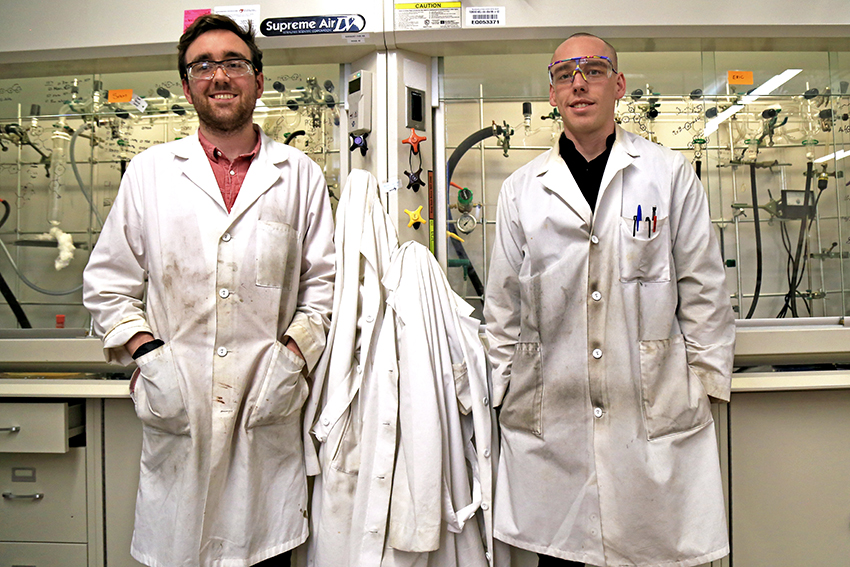Chemists at UT are opening the door for medical advances after synthesizing a material that can drastically reduce the cost and time required for chemical testing.
The material called PCM-22 was announced in an article in the journal The Chemie earlier this month. PCM-22 is a crystalline powder that can detect close to 20 different chemicals including benzene, a malignant carcinogen found in crude oil and gasoline.
“We’ve constantly been surprised by it,” said Simon Humphrey, co-author of the research and associate chemistry professor. “They’re all pleasant surprises as you would expect … and there’s always some good fortune to synthesis, so it’ll have high impact within this field for sure.”
With PCM-22, the hazardous waste clean-up process only takes a few hours rather than the days or weeks it currently takes. Clean-up crews will be able to detect what they’re dealing with on the spot and adjust their operation accordingly.
“If you can instantaneously know what you’re supposed to clean up, then you know how you’re supposed to clean it up to,” said Matthew Moore, co-author and chemistry graduate student. “If you’re worried about it being the wrong sort of spill then you clean it up the wrong way, and now you’ve created more damage.”
In application, PCM-22 works by placing the material in an ultraviolet light reader after it has bonded with the chemical that needs to be discerned. The color the powder turns is then used to identify the unknown substance.
PCM-22 is also used for sensing minuscule concentrations of ordinary water molecules within a solvent used in MRI scans, commonly referred to as heavy water.
Heavy water can be easily contaminated by air moisture or other sources of ordinary water, but these contaminants can make up as little as 10 parts per million. PCM-22 is helpful because it can sense these microscopic contaminants, and doctors can determine the viability of using the heavy water before performing an MRI.
The powder can be printed onto paper and used like a pH test strip to identify chemicals. It’s also inexpensive to make, allowing it to be cheaply mass-produced.
Samuel Dunning, a co-author and chemistry graduate student, said this was his first time being published, and he was thrilled by potential future applications of PCM-22.
“Sometimes you work on projects, and you’ll start out with these grand ambitions of how it’s going to change the world, but then you’ll see that it’s not really feasible,” Dunning said. “So, it is nice to see we have a project that has ended up with real world consequences.”





















